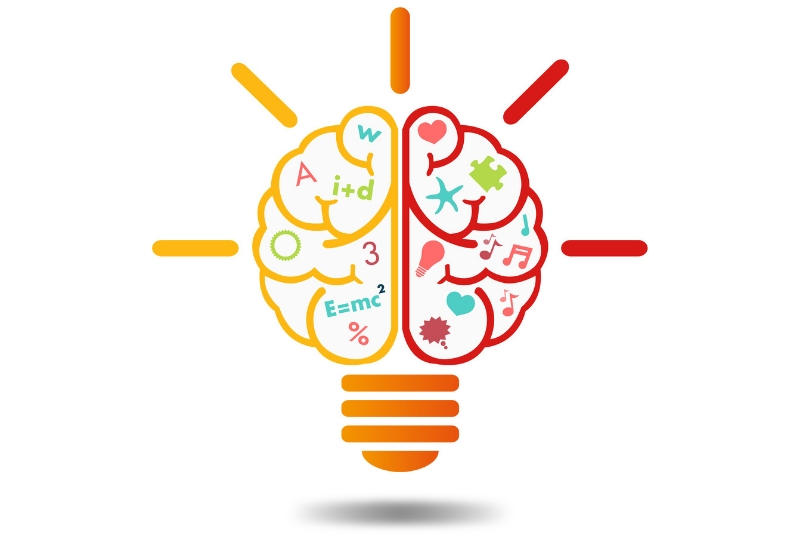
So you may think that you’re a visual learner? Or maybe you believe you learn best through hearing information? Well, you may need to think again.
There actually is a science behind what makes Instructional Design great.
Neuroscience in learning
So you may think that you’re a visual learner? Or maybe you believe you learn best through hearing information? Well, you may need to think again. Evidence has been continuously emerging that neuroscience has a lot to offer to the field of learning and instructional design. This means the popular “learning styles” models of the past few decades are being somewhat dispelled, as research is showing that designing learning in such a way that the brain can best assimilate it, for change, is best. New models of instructional design are based less on specific learning styles and more on brain-based design.
The word “neuroscience” may seem off-putting to some, but in fact, the concepts that are applied are not as complicated as might be imagined at first glance. Getting the brain to learn requires creating the conditions through which it can respond effectively to stimuli (called neuroplasticity). Neuroplasticity, or brain plasticity, refers to the brain’s ability to CHANGE throughout life. It has the amazing ability to reorganise itself by forming new connections between brain cells (neurons).
One of the founders of modern neuroscience, Donald Hebb, showed that neurons that continued to activate one another in this way strengthened their connections, like forging a new trail in the forest. Hebb’s Law is a fundamental principle to how we learn.
“Neurons that fire together, wire together”
– Donald Hebb
To simplify this law, let’s look at it another way. Our brain cells communicate with one another via synaptic transmission – one brain cell releases a chemical (neurotransmitter) that the next brain cell absorbs. This communication process is known as “neuronal firing.” When brain cells communicate frequently, the connection between them strengthens. Messages that travel the same pathway in the brain over and over begin to transmit faster and faster. With enough repetition, they become automatic. That’s why we practice things when we are learning a new skill like learning how to serve when playing tennis. After a while, it just becomes second nature. Even role-playing during a face-to-face training program can help to fire up the neurons, which in turn makes learning stick.

The skill of learning to serve.
While it is still relatively early days in understanding how precisely neuroscience impacts on learning, there is compelling evidence for its basis in science. In particular, there is evidence to suggest that a model called A.G.E.S. can be used to apply these latest learnings in digital media design. This model can help learning designers improve their learning initiatives by focusing on the critical variables to active learning and memory retention.
The A.G.E.S. acronym
This acronym stands for:
- Attention – Focus is a crucial factor in learning retention. To optimise conditions for effective long-term learning to occur, learners need to be paying full attention to the topic being trained. The key is to minimise distractions.
- Generation – Your design must prompt learners to create their own mental links. What they do with the information once it is taught has a significant impact on memory. Learners need to be doing something with the information. You can help by ensuring your design involves activating multiple senses.
- Emotion – Creating interaction between learners and triggering the positive feelings of social rewards are good ways to inspire emotive responses. Gamification, in particular, can be adopted for this purpose.
- Spacing – Long-term retention is improved when we learn over spaced intervals versus large information dumps. This is one reason that micro learning has become so popular. But just as the chunking down of the information is essential, so is the spacing of it.
Research shows that learning retention and recall is linked to the strength of activation of the learner’s hippocampus (a specific part of the brain). The more you can design your course to activate it, the more learner retention rates will improve. Each of the four elements of the A.G.E.S. model plays a crucial role in doing just that.
Applying the model
Applying these four concepts is helpful for instructional designers.
Client 1: With one of our clients, we found that spacing enabled greater success with learning retention. This is because the courses were designed in such a way that cognitive overload was avoided. This was achieved by structuring the content in chunks, ensuring the material was more accessible to assimilate and more enjoyable to review – precisely because it was better spaced. This approach helped to deal with one of the significant challenges to learning, which was stress. Stress can be a considerable barrier to education, so neuroscience shows that making lessons too tricky or too long should be avoided.
Stress – a considerable barrier to learning
Client #2: With this client, we honed in on gaining the benefits from gamification. Neuroscience experts believe that when we get a reward for learning something, our interest will be piqued. This increases levels of excitement and in turn, participation. It will also generate emotion which aids longer term retention. The reward does not even need to be that great to encourage higher levels of engagement. Merely levelling up and achieving a new badge can be very motivating. We introduced a leaderboard system showing progression through the course based on learning completed and test scores achieved – which encouraged much higher levels of take-up and healthy competition between employees. The leaderboard also leads to more significant discussion of the concepts as employees tried to figure out how they could “level up” and how to enhance their learning to do so. Building these types of features into an eLearning solution is also improved through the introduction of positive reinforcement, such as tailoring messages based on accomplishments and specific learning to encourage people to continue learning.
Neuroscience in learning also shows that if the course has relevance to the person, then retention of the information is likely to be higher. This is why people are better able to understand concepts when provided with meaningful examples, rather than when they are simply presented with abstract ideas.
So that’s a quick overview of how we practically used the A.G.E.S. model in our learning design. Stay connected as we launch How to become a super learning designer & The simple art of using emotion to help learning.
At The Learning Factor, we simplify the business of learning. We craft exceptional training solutions that solve critical business challenges across all touchpoints, screens, and devices.
If you have like what you have read, we would love to hear from you. You can chat with us LIVE between 8.30am-5pm Monday to Friday using the yellow chat button on this screen. Also be sure to follow us on LinkedIn.


